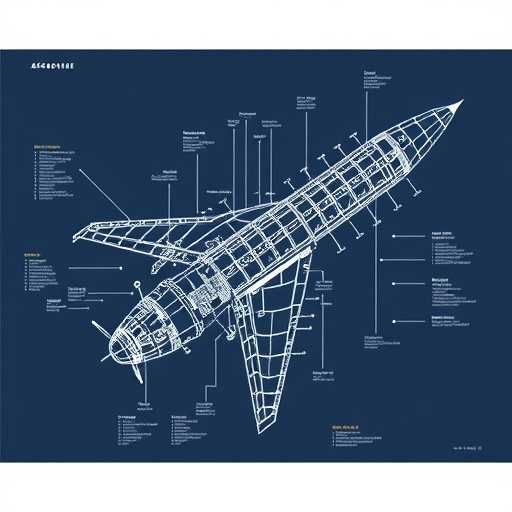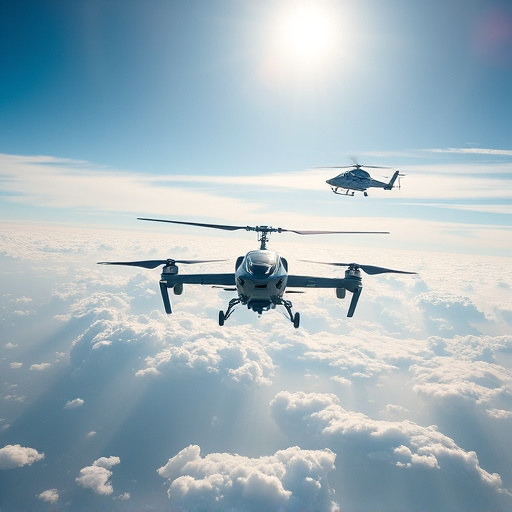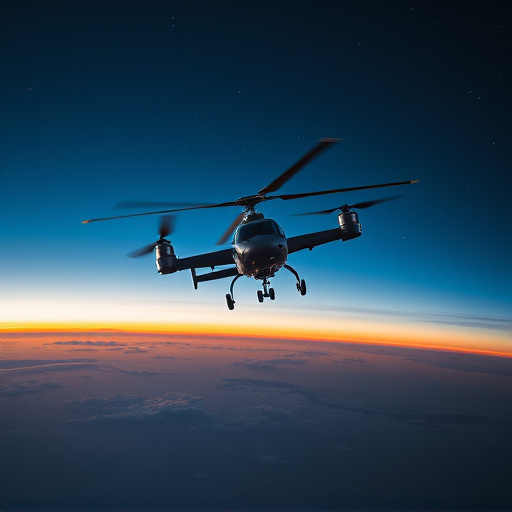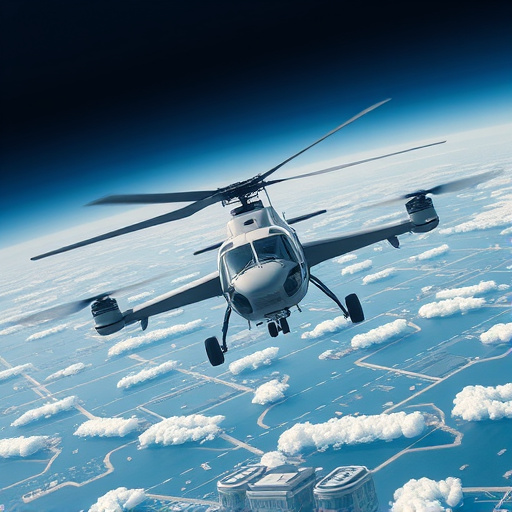aerospace
Aerospace: Unlocking the Skies and Beyond
Introduction
Welcome to an in-depth exploration of the captivating world of aerospace, a dynamic industry that has revolutionized human connectivity, science, and our understanding of the globe. This comprehensive article delves into the multifaceted aspects of aerospace, tracing its historical journey, global impact, economic significance, technological breakthroughs, regulatory landscape, and future prospects. By the end of this journey, readers will gain a profound appreciation for the vital role that aerospace plays in shaping our modern world.
Understanding Aerospace: A Multidisciplinary Field
Definition and Core Components
Aerospace is an interdisciplinary field encompassing the design, development, production, and operation of aircraft, spacecraft, satellites, and related technologies. It seamlessly blends aviation, space exploration, and defense applications, pushing the boundaries of human innovation. The core components of aerospace include:
- Aircraft Design: This involves creating efficient airframes, propulsion systems, avionics, and structural integrity to ensure safe flight.
- Space Exploration: Aerospace engineers develop spacecraft, satellites, and rovers to explore celestial bodies, expanding our knowledge of the universe.
- Propulsion Systems: From jet engines to rocket motors, these power the aircraft and spacecraft, enabling them to overcome Earth’s gravity and traverse the cosmos.
- Material Science: Advanced materials with unique properties are crucial for aerospace applications, offering lightweight yet robust solutions.
- Avionics and Communication: Modern aircraft and spacecraft rely on sophisticated electronics for navigation, communication, and flight control.
Historical Context and Milestones
The history of aerospace is a testament to human curiosity and innovation. Key milestones include:
- 1783: The first successful hot-air balloon flight by Jean-François Pilâtre de Rozier marked the beginning of manned flight.
- 1903: The Wright brothers’ powered flight at Kitty Hawk, North Carolina, revolutionized aviation, paving the way for modern aircraft design.
- 1957: The Soviet Union’s launch of Sputnik 1 initiated the Space Age, leading to a global space race and significant advancements in rocketry.
- 1969: NASA’s Apollo 11 mission achieved humanity’s first moon landing, a monumental achievement in space exploration.
- 2000s: The advent of private spaceflight companies like SpaceX and Blue Origin brought new dynamics to the industry, aiming to reduce costs and increase accessibility.
Global Impact and Trends: A World Connected by Aerospace
International Influence
Aerospace has become a global phenomenon, transcending borders and uniting nations through collaboration and shared achievements. Its impact is evident in several ways:
- Global Connectivity: Air travel has connected distant corners of the world, fostering international trade, tourism, and cultural exchange.
- Scientific Research: Aerospace missions provide unique opportunities for scientific exploration, contributing to advancements in astronomy, geology, and climate science.
- Satellite Technology: Satellites enable global communication, weather forecasting, navigation (e.g., GPS), and remote sensing, enhancing everyday life and critical services.
Regional Trends and Disparities
While aerospace has a significant global footprint, regional dynamics and disparities exist:
| Region | Strengths | Challenges |
|---|---|---|
| North America | Leading in aviation technology, home to major airlines, and space agencies like NASA. | High labor costs, stringent environmental regulations. |
| Europe | Strong focus on sustainable aviation, advanced spacecraft technologies, and satellite infrastructure. | Post-Brexit economic shifts, regional political tensions. |
| Asia-Pacific | Rapidly growing aerospace industries in China and India, significant contributions to commercial aircraft manufacturing. | Supply chain disruptions, intellectual property issues. |
| Middle East | Important hub for air freight, hosting major airports and airlines. | Political instability, high costs of doing business. |
| Africa | Developing space programs, focusing on satellite technology for communication and resource management. | Limited infrastructure, lack of investment in higher education. |
Economic Considerations: A Powerhouse Industry
Market Dynamics
The aerospace market is characterized by its complexity and dynamic nature:
- Commercial Aviation: The largest sector, driven by passenger air travel, cargo transportation, and aircraft manufacturing.
- Defense and Space: Involves military aircraft, satellites, spacecraft, and related technologies, with significant government spending.
- General Aviation: Includes small aircraft, business jets, and private aviation, catering to a niche market of enthusiasts and businesses.
Investment Patterns and Market Growth
Global Aerospace Market Size (in Billions USD):
- 2020: $737
- 2021: $796
- 2022: $845 (Projected)
- 2025: $1,072 (Forecast)
- Key Drivers: Economic recovery post-pandemic, increasing air travel demand, and the push for sustainable aviation technologies are primary market catalysts.
- Challenges: Supply chain disruptions, rising material costs, and geopolitical tensions impact industry growth.
Aerospace as an Economic Catalyst
- Job Creation: The aerospace industry employs millions worldwide, offering skilled roles in engineering, manufacturing, maintenance, and research.
- Economic Spin-offs: Advanced technologies developed for aerospace often find applications in other sectors, fostering innovation and economic growth.
- Export Earnings: Many countries generate significant foreign exchange through aerospace exports, contributing to their trade balances.
Technological Advancements: Pushing the Boundaries
Sustainable Aviation
A major focus of modern aerospace is sustainability:
- Electric and Hybrid Aircraft: Companies like Airbus and Boeing are exploring electric vertical takeoff and landing (eVTOL) aircraft and hybrid propulsion systems to reduce carbon emissions.
- Biofuels and Alternative Fuels: Research aims to develop sustainable aviation fuels from alternative sources, minimizing the environmental impact of air travel.
- Optimized Airframes and Aerodynamics: Advanced design techniques and materials reduce fuel consumption and enhance aircraft efficiency.
Space Exploration Innovations
- Reusable Launch Vehicles: SpaceX’s Falcon 9 is a notable example, significantly reducing launch costs by recovering and reusing first-stage boosters.
- In-Space Refueling: Enabling spacecraft to extend their missions beyond Earth’s orbit, opening up possibilities for deep space exploration.
- 3D Printing in Space: This technology allows the creation of tools, parts, and even structures in space, reducing the need for frequent resupplies from Earth.
Emerging Technologies
- Autonomous Systems: Drones and autonomous aircraft are revolutionizing various industries, from agriculture to delivery services.
- Advanced Materials: Carbon fiber composites, advanced polymers, and smart materials enhance aircraft performance and efficiency.
- Digitalization and AI: Integration of artificial intelligence and digital technologies improves flight operations, maintenance predictive analytics, and passenger experiences.
Challenges and Ethical Considerations: Navigating the Future
Safety and Security Concerns
Ensuring safe and secure aerospace operations is paramount:
- Air Traffic Management (ATM): Efficient and conflict-free management of air traffic is crucial for preventing mid-air collisions and ensuring smooth travel.
- Cybersecurity: Protecting aircraft systems, satellites, and airspace from cyberattacks is essential to maintain mission integrity and public safety.
- Human Error and Fatigue: Mitigating these factors through rigorous training and improved work-rest cycles remains a priority for airlines and space agencies.
Environmental Impact and Sustainability
- Carbon Emissions: Aviation contributes significantly to global greenhouse gas emissions, necessitating sustainable practices.
- Noise Pollution: Aircraft noise impacts nearby communities, prompting research into quieter engines and more efficient flight paths.
- Space Debris: The growing number of satellites and space missions raises concerns about space debris accumulation and potential collision risks.
Ethical Implications of Space Exploration
- Resource Exploitation: Mining celestial bodies for resources raises ethical questions regarding the ownership and distribution of these resources.
- Environmental Impact on Other Planets: Protecting pristine planetary environments, especially as we explore Mars and beyond, is crucial to preserving scientific data and potential ecosystems.
- Global Governance: Establishing international agreements and governing bodies to oversee space activities ensures equitable access and prevents conflicts.
Conclusion: A Brighter Future Through Aerospace Innovation
Aerospace continues to shape our world, bridging continents, advancing science, and expanding our understanding of the universe. As technology evolves, the industry faces challenges related to sustainability, safety, and ethical considerations. However, these obstacles also present opportunities for innovation, collaboration, and global problem-solving.
The future of aerospace promises exciting possibilities, from sustainable air travel to groundbreaking space exploration missions. By embracing technological advancements while navigating ethical and environmental concerns, humanity can continue to reach new heights, ensuring that the skies and cosmos remain a realm of wonder and discovery for generations to come.













